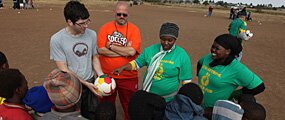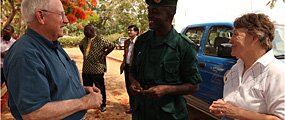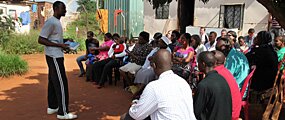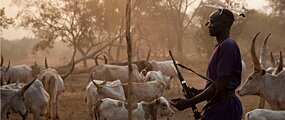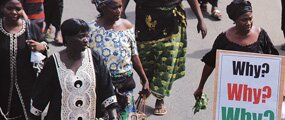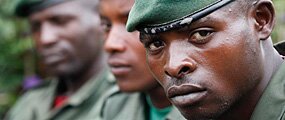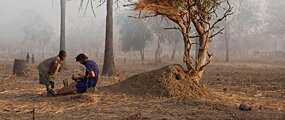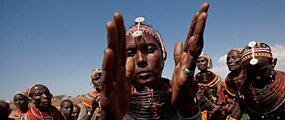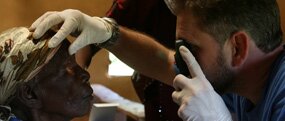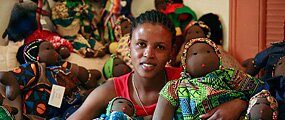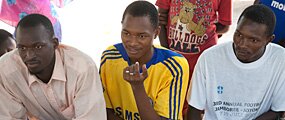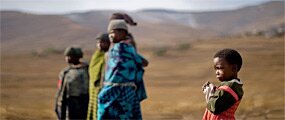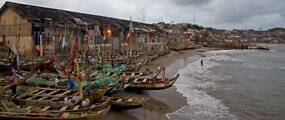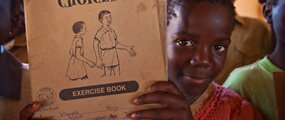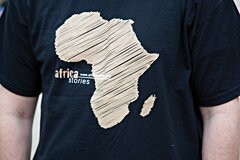Dolls Teach About African People Groups
Kate Ncube has the world at her fingertips; at least the world of Southern Africa. A resident of Johannesburg, South Africa, Kate hand makes and sells dolls of 17 of the region’s tribes, or people groups. Attached to each doll is the story of its representative people group.
 “I enjoy learning about other cultures,” Kate said. “It gives me a lot of insight and helps me understand a person. To understand them, I must understand their culture!
“I enjoy learning about other cultures,” Kate said. “It gives me a lot of insight and helps me understand a person. To understand them, I must understand their culture!
“Many people overseas don’t know about black people here in Africa,” she said. “So, I thought if I put stories with the dolls, people can read about the culture, dress and practices of that tribe. When they read, they may think, ‘Oh, I didn’t know that!’”
Twenty-six-year-old Kate came to South Africa as a political refugee from Zimbabwe in 2007. She is a member of the Ndebele people group. “Life there is not good for us because of the political situation,” she said. “It is very bad.”
When Kate arrived in South Africa, she had no work and didn’t know what to do. She made lots of friends, though, with people from all over Africa.
One day, a friend from Ghana challenged her. “You can’t just sit around doing nothing,” the friend said. “How are you going to live? What are you going to eat? There are a lot of opportunities in Johannesburg. Maybe you can sell something.”
A short time later, Kate met a woman who asked her if she knew how to sew. Even though she wasn’t really good at it, Kate said, ”Yes, and I can use a sewing machine.” The woman provided her with a machine and placed an order for handmade cloth dolls.
Making dolls was something Kate could do, since she learned about the craft in her early school days. “When I was at school in Zimbabwe, I enjoyed making dolls,” Kate said. “Also, I knew how to crochet, so that helped.”
Kate only went to school through the seventh grade, so it was her experiences like doll making, rather than a formal education, that gave her an advantage in this situation.
The business deal ended up being too expensive for the woman who placed the initial doll order, but after encouragement from friends, Kate decided to venture out on her own.
 “Little by little I started to buy the materials, even though it was expensive,” Kate said. “Then I started making the dolls and selling them at the market.”
“Little by little I started to buy the materials, even though it was expensive,” Kate said. “Then I started making the dolls and selling them at the market.”
All of Kate’s dolls are women, dressed in authentic-looking traditional clothing, including headscarves, blankets and intricate beadwork. Some of the people groups represented by her dolls are Ndebele, Zulu, Swazi, Shangaan and Shona. The entire collection of dolls reflects peoples from Zimbabwe, South Africa, Namibia, Botswana, Swaziland, Lesotho and Mozambique.
Some of what Kate knows about the peoples and cultures of the region comes from living among them. What she doesn’t know firsthand, she learns by intentional observation and by asking questions. Kate tries to make each doll an authentic representation of its people group.
Through connections at the outdoor craft market where she sells her dolls, Kate receives a lot of encouragement, in addition to suggestions for expanding her line.
Kate is pleased with the success of her business venture. “But it’s not me …,” she said. “It’s God.
“Now, I am happy; very happy.”
Follow Us Online!






